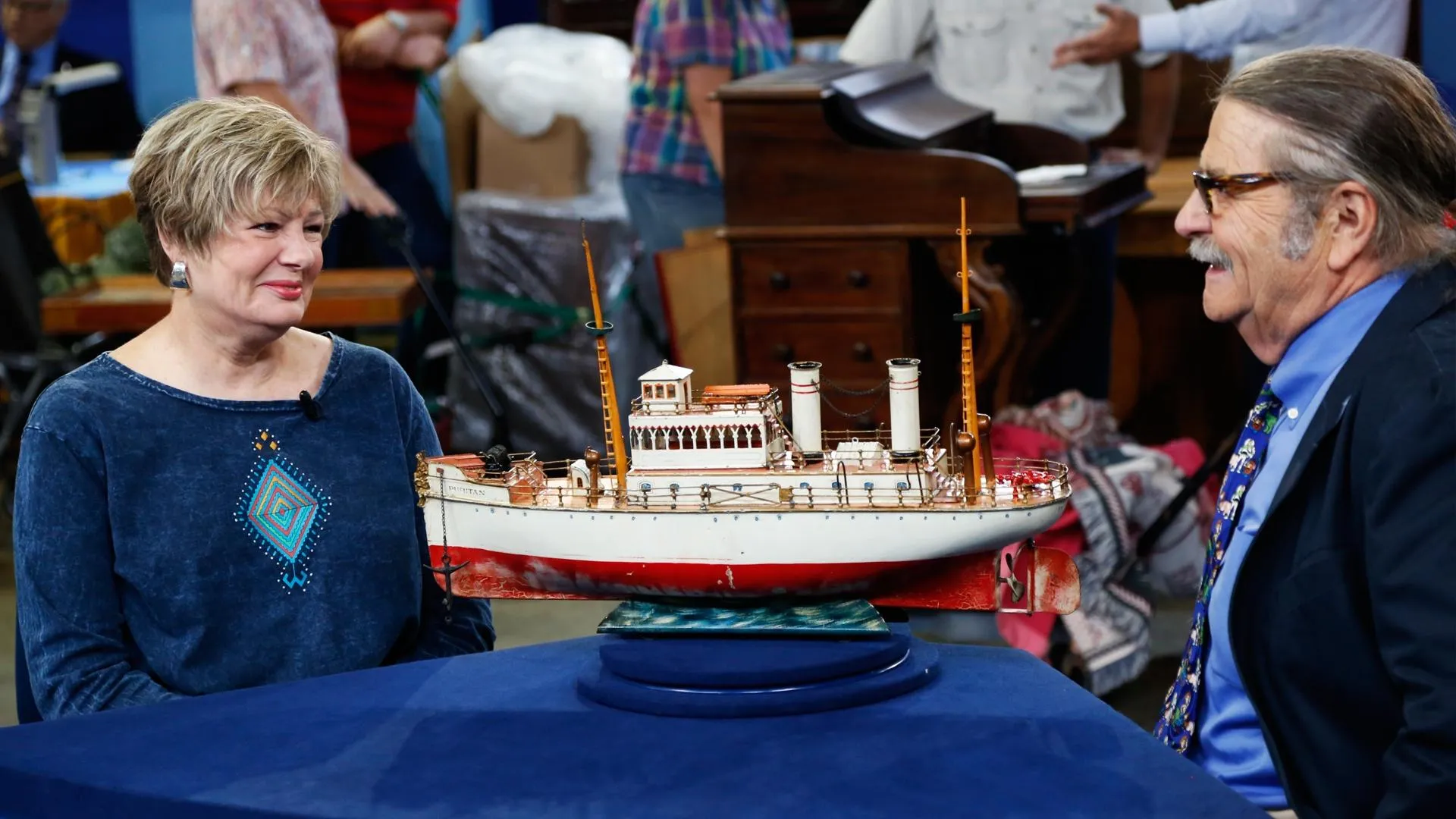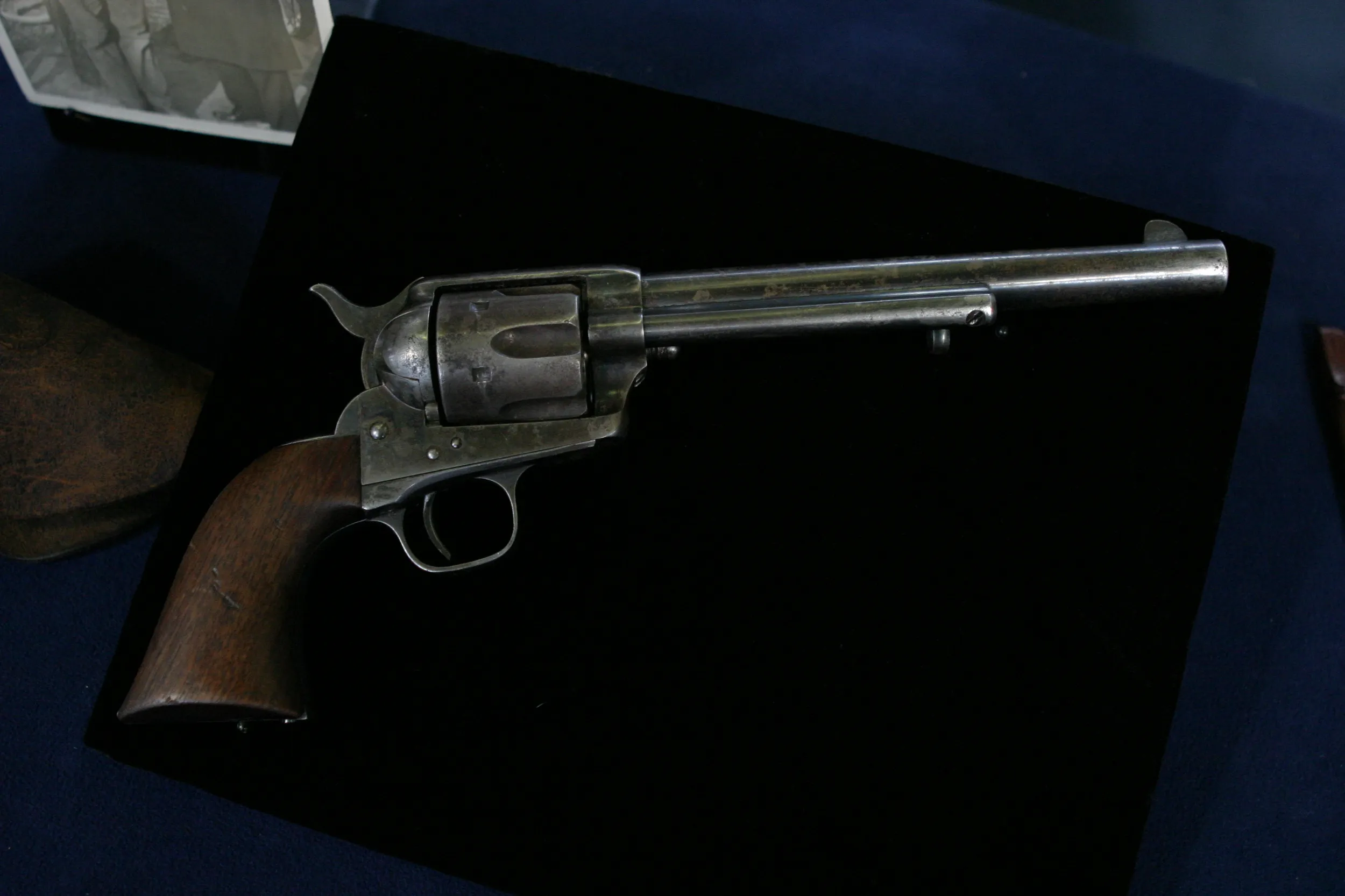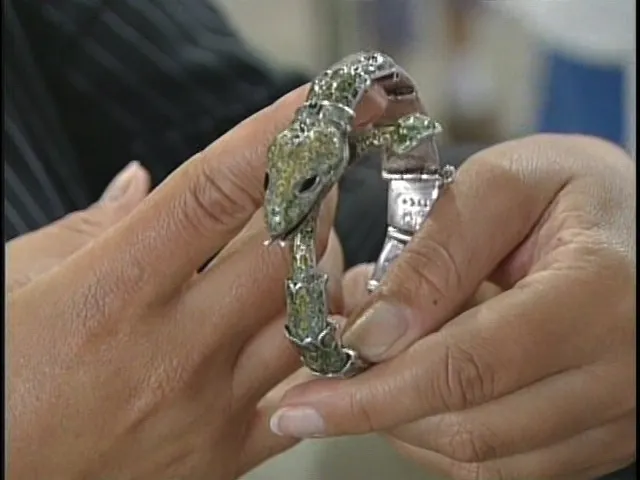GUEST: This came from Elfindale. It's a mansion in Springfield. The people who built it, John and Alice O'Day, apparently he kind of ran around on her, so when they got a divorce, she got the house and the grounds and I think she went maybe a little bit on a spending spree. So she got a furniture set with a table and a buffet piece and china and everything and all the chairs, and the copper chandeliers. When she runs out of money, she decides to sell this to the Sisters of the Visitation. The Sisters open their home for a school, and her furniture was left in the school. We actually saw it as kids. My mother went to school there, I went there for first grade. After my first grade year, they announced that they're going to have to close it, so my mother, who had just been diagnosed with multiple sclerosis and had been trying to keep the school open, decided she's going to go in and buy things to remind her of her childhood. So she comes home with this furniture set, and dad asked her how much she paid, and it was $150, and he got very upset. There were five kids, and in 1964 that was a lot of money. He wasn't very happy with her. But she pulls out the chandeliers and she goes, "Well, I only paid $1.50 for these."
APPRAISER: This Arts and Crafts chandelier was probably put into the house really just around the turn of the century. It is copper. It is beautifully made. I can imagine with "eat, drink and be merry," that's not going to work for the nuns, right? We don't think so. And you have more than one of these.
GUEST: Yeah, I have two.
APPRAISER: This is not American. It's actually English. These cutout panels that you see in the front are done in a more English style. The way that these rivets are done on the corners here, that's more English. The thickness of the copper is also more English. It's a little thinner. They have a little more finesse as far as being able to manufacture things with copper. Americans used more copper because they had more copper, and oftentimes you had more repoussé decoration here. So all of these things are pointing us to a company maybe in England, say a Liberty and Company, which all of these guys were stealing ideas from each other anyway, so the fact that it's English as opposed to American really doesn't diminish from the fact that it's a really beautiful chandelier. The cutout work, which would have been less American, they would have done more stamping at this time period. And these elongated pieces here are actually called lappets, and these are reminiscent of trailing vines or leaves that you would find in the whole thought of nature that was so prevalent during the Arts and Crafts period. Beautiful decoration. We think it's pretty cool. We also think it's doubly cool that you have two. I would say at auction in today's market, you're looking at a value of about $5,000 apiece.
GUEST: Oh, wow.
APPRAISER: Yeah.
GUEST: Dad was a stockbroker, but I think she did a better investment.
APPRAISER: Thanks, Mom!
GUEST: Yeah, thanks, Mom. Oh, thank you, Stuart, that is wonderful.
APPRAISER: You're welcome. Thanks for coming down and making us all a little happy today.
GUEST: Thank you.











